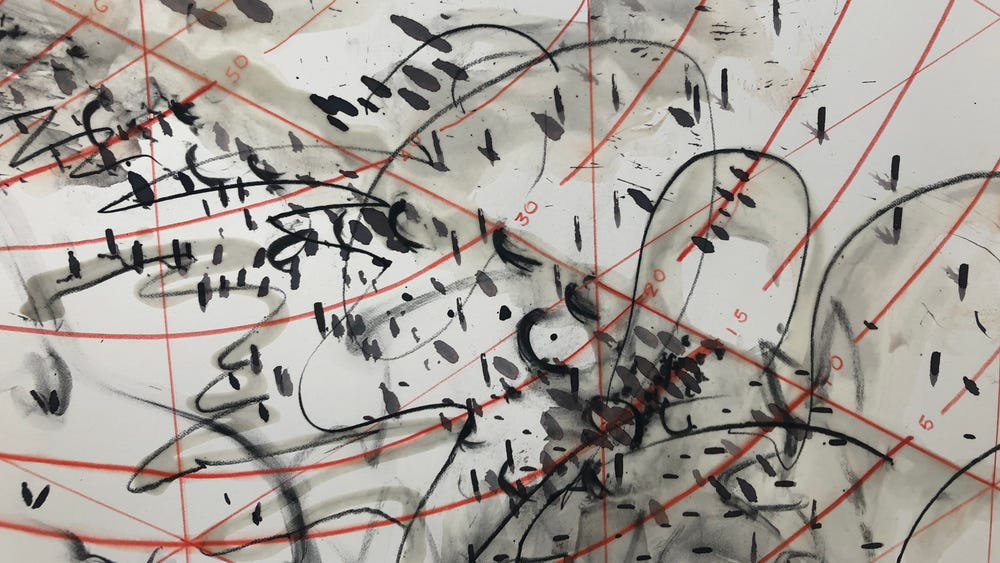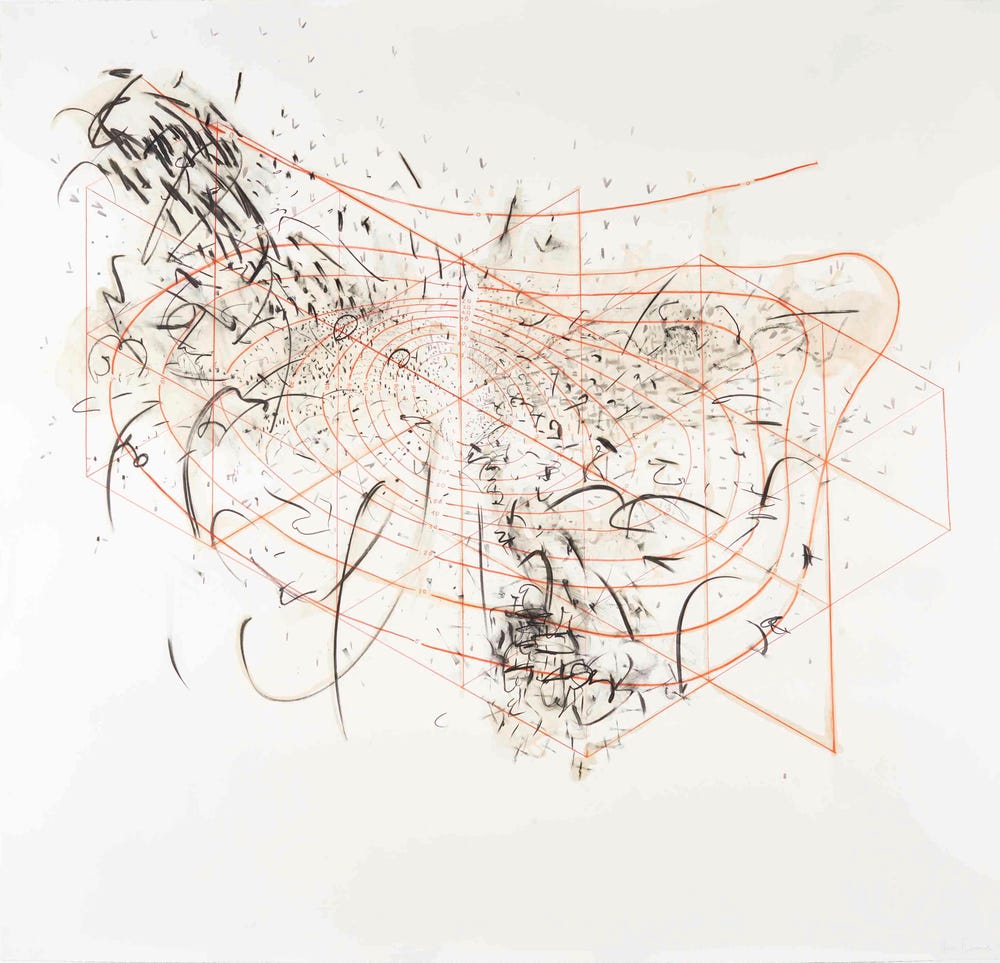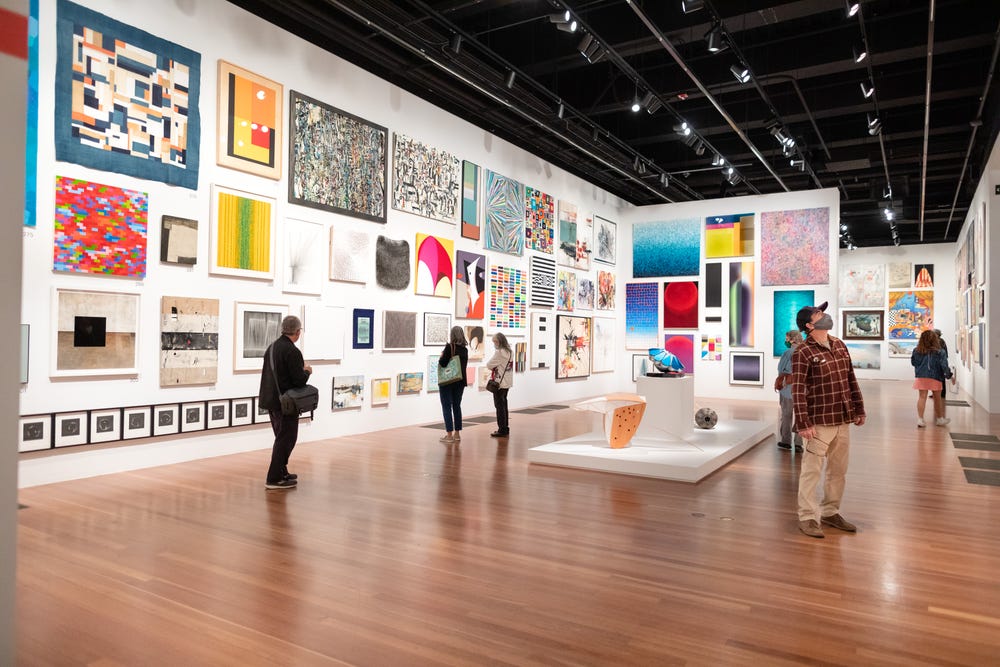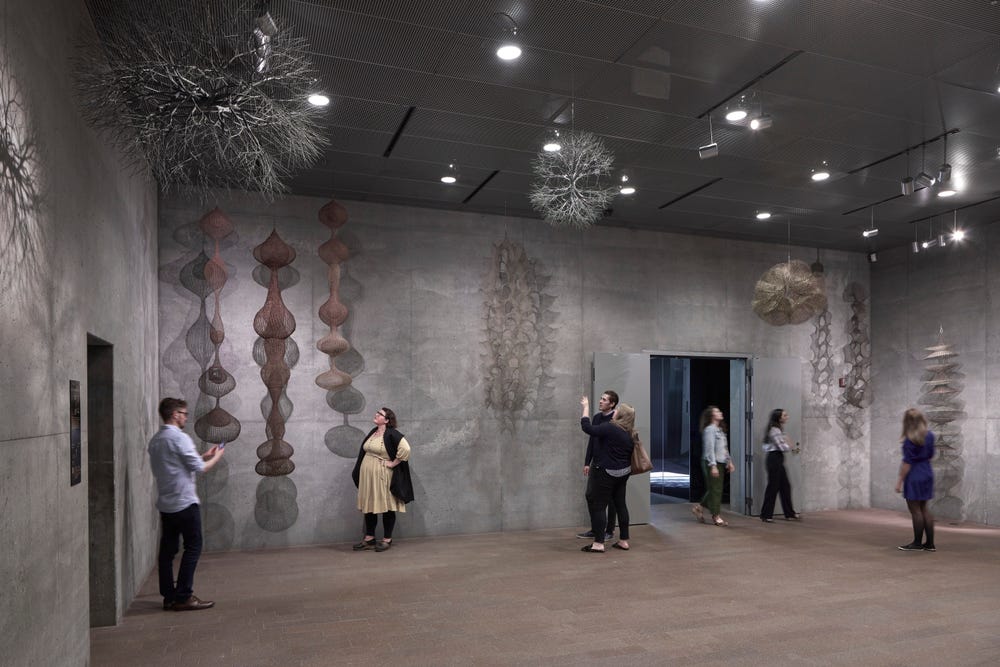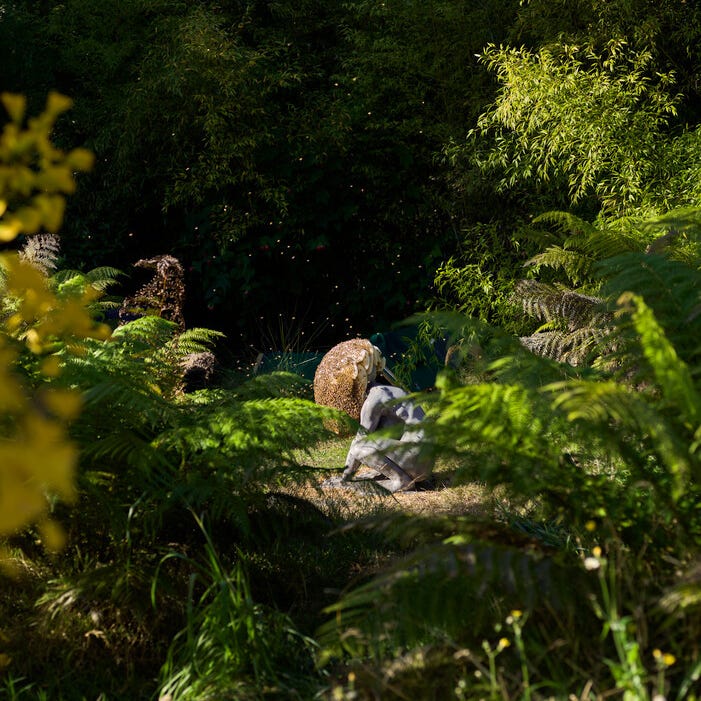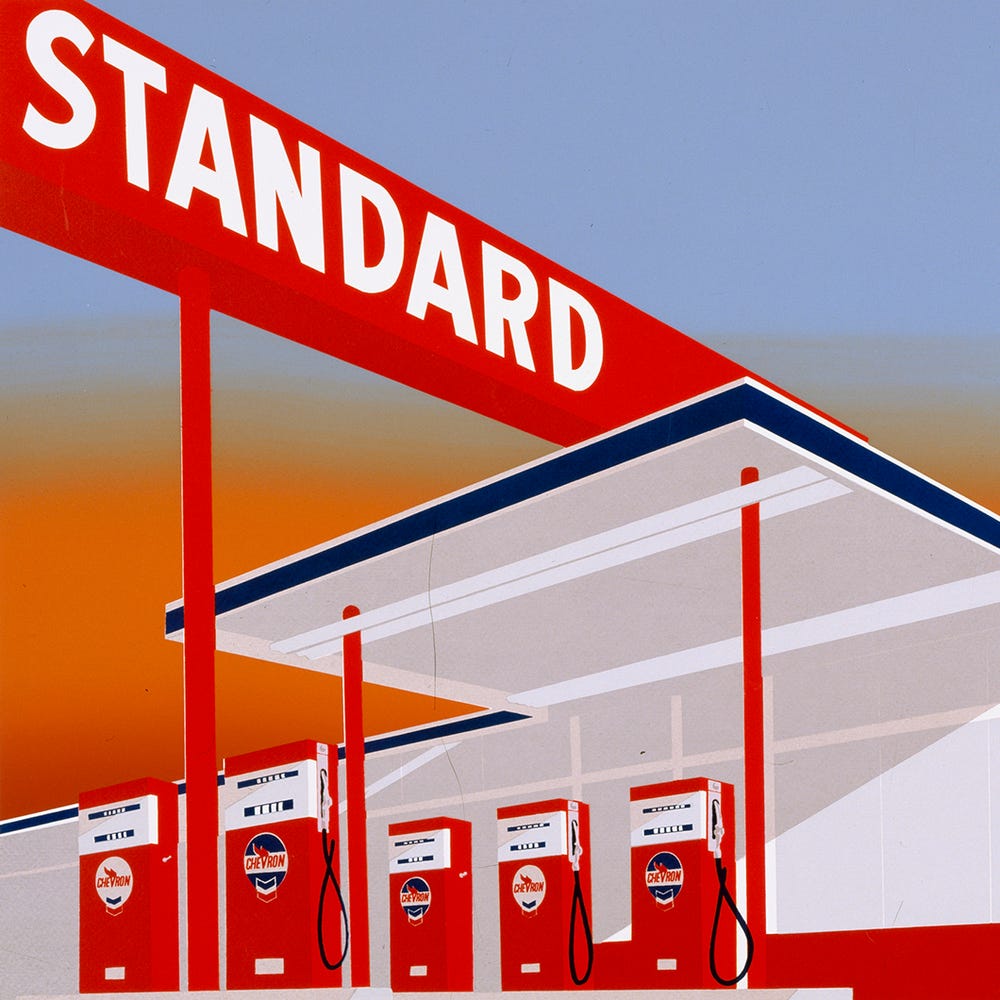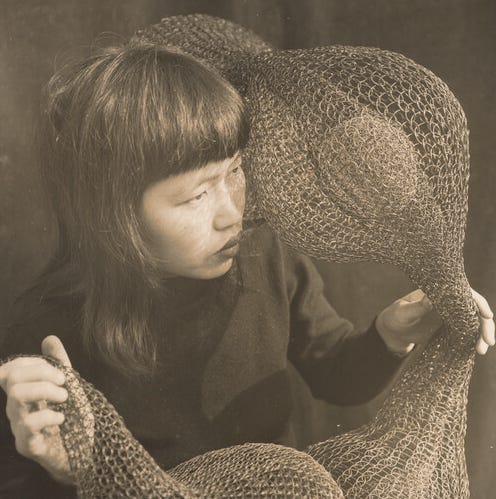Q+A: Bay Area Artist Yulia Pinkusevich
By Megan Bates, digital media producer, in conversation with artist Yulia Pinkusevich
August 31, 2023
Detail view of Casualty Isorithm
We sat down with artist Yulia Pinkusevich to talk about her work Casualty Isorithm (2018), which was featured in The de Young Open in 2020 and acquired for our collection. Here, she shares how she became an artist, the work’s Cold War inspiration, her advice for aspiring artists, and more.
Megan Bates: Can you tell us a little bit about your path to becoming a professional artist?
Yulia Pinkusevich: In junior high and high school, I took Saturday classes in New York City at Parsons School of Design, the New School, Cooper Union, local art colleges in my area. I had a really fantastic high school art teacher who I feel deserves a shout-out: Her name is Joan Ditieri Brande. We’re still in touch. She’s still making art and living in NYC.
When I learned that you can major in fine art, I thought, Wow, what do you mean? I could just make the art that I want to make, and this could be my pursuit and my passion in life.
MB: Did you (or those around you) ever have doubts about choosing art as your career? How did you overcome them?
YP: A million people tried to talk me out of it. Being an immigrant and someone who’s coming from a working-class family, a lot of the people I was surrounded by were also working-class immigrant families. And their kids were all on track to be lawyers and doctors. They thought my career choice was completely absurd.
Luckily my parents were pretty supportive. But I also just didn’t give them a choice. I was like, “This is what I’m gonna do. This is what I love. I don’t really care what you think is best for my future because it’s my life not yours.”
MB: Where did your interest in the Cold War come from?
YP: Being raised in the Soviet Union, it was very much a part of my everyday existence. As a first and second grader, we did war drills where we had to put on gas masks and climb under tables.
When I first landed in New York City, there were all these movies about “the bad guys,” and they were always the Russians. I’ve had conversations with Turkish friends and Syrians, or people from Iran, who are like, “Oh yeah, you too?” I felt that complexity in the identity of being Ukrainian Russian American. And I think it’s very much still at the forefront of our consciousness today.
Yulia Pinkusevich, Casualty Isorithm, 2018. Charcoal, ink, graphite and beeswax on paper, 57 x 60 x 1 in. (144.8 x 152.4 x 2.5 cm). Museum purchase, Achenbach Foundation for the Graphic Arts Endowment Fund, 2020.54
MB: How did you come up with the idea for Casualty Isorithm?
YP: It came out of research I was doing for a project called Double Vision. I stumbled on a manual from the US military that taught soldiers how to calculate the casualties from a nuclear airburst.
I was really struck by the mapping instructions, how precise and calculated they were, how much specificity there was in the methodology, but how little there was about the humanity that it was describing, the mass murder that it was actually depicting. I really wanted to take back that visual language, this very masculine, very militaristic visual language, and add a layer of empathetic gestures back into them that spoke to the living beings that these maps were actually depicting.
MB: What are your thoughts around community shows like The de Young Open?
YP: I think The de Young Open is a really important thing. New York has the Whitney Biennial, but the de Young does a more populist show. It’s focused on artists in the Bay Area, which I think is really important because there are so many, many, many artists in the Bay Area that don’t exhibit here. It’s really nice to see the breadth of talent that’s here.
Installation view of The de Young Open, 2020. Photograph by Gary Sexton
MB: Can you tell us how your work ended up in the museum’s collection?
YP: A month or so after the show opened, I received an email saying, “Hello Yulia, we’re interested in acquiring your piece.”
It was kind of the biggest thing career-wise to happen to me. This is my first museum acquisition, and it’s a museum in my city. It means a lot to me to be part of this collection.
MB: What is your favorite piece of art at the de Young?
YP: The pieces that always warm my heart when I see them are the Ruth Asawa sculptures. They’re just so beautiful. There’s an element of craft, an element of history. She’s such a prominent figure in the Bay Area. She did so much for arts education in San Francisco. She really stuck to her guns and continued to make this work even when people didn’t understand it. The way they take up space, the way they play with light and shadow, there’s a directness to them. I’m always just delighted by them.
Hamon Observation Tower lobby, de Young, featuring Ruth Asawa’s sculptures, 2019. Photograph by Henrik Kam. © Fine Arts Museums of San Francisco
MB: What advice would you give to aspiring artists?
YP: I think the biggest thing is, you gotta just follow your heart and do the work that makes you feel good. Because the career thing and the recognition thing, it kind of comes and goes. There’s a lot of rejection.
I think now we need artists more than ever. Art can speak to things that are difficult to talk about. Artists notice things that are on the fringes. Artists can advocate for people who are marginalized. Your voice is needed more than ever.
MB: What do you hope the art world looks like in the future?
YP: I hope the art world looks much more equitable in the future. I think, statistically, 11% of all museum holdings in the US are works by women. And that’s not even talking about people of different races and gender identities. And we’re 50% of the population, right?
I think there’s a lot of emphasis on Western art. There are so many amazing artists that are not part of that dialogue that are making incredible work, and we’re missing out.
This conversation has been edited for length and clarity.
